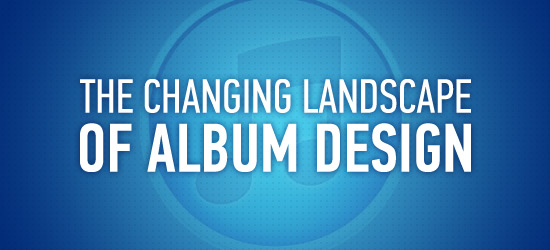If you're looking to hire a development firm to build you a mobile or web app, this Quick Reference Guide is a must-have.
The Changing Landscape of Album Design
DesignI remember the first album cover that truly grabbed my attention: Meatloaf’s Bat Out of Hell. Why my dad had a Bat Out of Hell LP, I don’t know. What I do know is that image of a guy on the chopper bursting out of hell in a cemetery on the cover, made me think, “I need to listen to this record.”

Such is the power of album art. It draws the viewer in. It can expand the story of the album. It can increase album sales. In some cases it can even achieve legendary status, like Pink Floyd’s The Dark Side of the Moon or the Beatles’ Abbey Road. For years, designers have worked alongside musicians and record labels to create imagery and packaging that brings an album to completion. However, the landscape of album art is changing drastically with the rise of iTunes and similar digital music providers, and as graphic designers we need to adapt.
Album Sales Figures
If we look at Soundscan’s 2009 stats for music sales in the United States, there are a few numbers that jump out.
- Music sales overall went up 2.1% – good news for the music industry and thus for the design industry.
- Digital singles sold 8.3% more than the previous year, and digital albums themselves rose 16.1%.
- Vinyl sales climbed 33%, but still only make up 1.6% of total sales (2.5 million units compared to 1.55 billion units).
- 297.6 million physical albums were sold; of this, 76.4 million were digital albums.
What do these numbers tell us? Basically, digital sales continue to rise while physical album sales continue to decline.
As designers, it’s important to understand these figures and anticipate how they will affect our industry. We aren’t just designing for 12” printed LP canvases any more. We aren’t just designing for 4.75” jewel cases any more. We are designing for these and the digital marketplace… and the digital marketplace is completely different than the traditional brick & mortar music shop. The method of interaction is different; the way albums are displayed is different; the canvas is different; the viewer’s attention span is different. If we are cognizant of these changes, however, we can still design in a manner to complement the music and to impact music appreciators and purchasers.
Challenges for Designers
The biggest challenge designers have to face is the fact that the album art canvas is shrinking while the amount of music on the digital bookshelves is expanding at a rate never before seen, thanks to advances in home recording and independent distribution companies. This means that designers have less space – say, 200 pixels square – on a crowded screen to make an impact, to entice the iTunes-surfing viewer to click through and preview the album’s tracks. Consequently, we have to design artwork that is as effective at 200 pixels square as it is for CD and LP sizes.
Think about it. A good logo must work at billboard sizes as well as business card sizes and a website must work on your mom’s 1028 by 768 pixel monitor as well as it does on your 2560 by 1600 pixel monitor. Album art in this day and age has similar restrictions. To meet these requirements, concessions and adaptations in artwork have to be made. We need to understand these challenges and limitations and realize that while album art has always had to be to be flexible, the evolving marketplace has taken this flexibility to a whole other level.
Along with the increasing need for flexible album art comes a changing skill set for today’s album designers. For example, iTunes is the leader when it comes to digital music distribution and those behind iTunes implemented new ways for music appreciators to interact with album art. First, they implemented CoverFlow, which allowed listeners to search through their music by album cover (as opposed to a list of song titles). Next, they brought in the iTunes LP. The iTunes LP lets listeners interact even further with an album they’ve purchased in iTunes via a digital collection of related artwork, photos, lyrics and more.
What Does This Mean for Designers?
What this means for designers is that the scope of album design is changing – and with that, so is the required skill set. Essentially, while we still have to design print-ready artwork for those artists looking for a physical release, we must now also be comfortable preparing digital files for applications like the iTunes LP. As any designer who works in both print and web will know, this means different color spaces, different file sizes, compression techniques and so on. Many of us will be broadening our skills because of this, or at least preparing ourselves to work with a developer in what was a traditionally print-focused medium – another indication that the print-only designer is a dying breed.
While I don’t necessarily agree with Peter Saville’s 2008 proclamation that “the album cover is dead,” I do know that album art isn’t in the same space. Digital music sales are rising. True, people still buy four times as many physical albums as they do digital albums – but if the numbers continue their trend, we may very well see a future where all music is distributed solely in a digital means. As long as there is music and people to buy it, designers will be making album covers; however, the specifics of tomorrow’s album art are what lie in the grey.
This article was originally featured in Issue #3 of Display Design Magazine.
